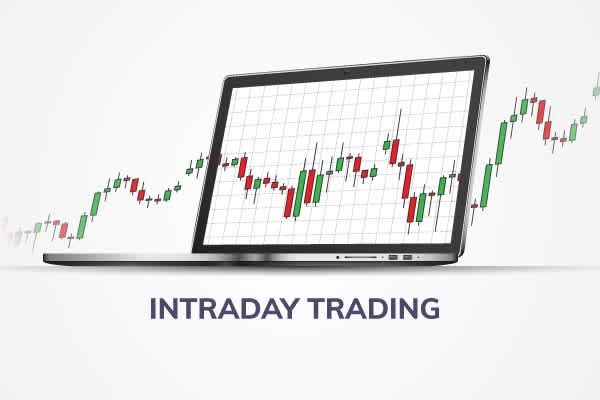The Best 10 Candlestick Patterns
Trading Strategies
What are Candlestick Patters?
A technical tool that condenses data from several time periods into a single price bar is the candlestick chart. Because of this, they are more beneficial than conventional OHLC bars or straightforward lines that join the closing prices.
To identify significant levels of support and resistance, traders might use patterns formed by individual candlesticks. A market's opportunity can be indicated by a wide variety of candlestick patterns; some reveal the equilibrium between buying and selling pressures, while others point to continuation patterns or indecisive markets. Understanding the fundamentals of candlestick patterns and how they might influence your trading decisions is essential before you begin trading.
Patterns of Bullish and Bearish Candlesticks
One of the most commonly used elements of technical analysis is the use of candlestick patterns. For those who are unfamiliar, a candlestick is a sort of chart that displays the daily opening and closing prices in addition to the highest and lowest values for a specified time period. The body, the two shadows, and the top are the three components that comprise the representation of the candlestick. The shadows are the lines that the candlestick's body casts, extending both above and below it. Whereas the line in the lower shadow is called the tail, the line in the upper shadow is called the wick.
Bullish Candlestick Patterns:
Candlestick Pattern | Direction |
Morning Star | Bullish (Reversal) |
Bullish Engulfing | Bullish (Reversal) |
Doji | Bullish (Indecision) |
Hammer | Bullish (Reversal) |
Bullish Harami | Bullish (Reversal) |
Piercing Pattern | Bullish (Reversal) |
Inside Bars | Bullish (Continuation) |
Long Wicks | Bullish (Reversal) |
Bearish Candlestick Pattern:
Candle Pattern | Direction |
Evening Star | Bearish (Reversal) |
Bearish Star | Bearish (Reversal) |
Doji | Bearish (Indecision) |
Bearish Harami | Bearish (Reversal) |
Dark Cloud Cover | Bearish (Reversal) |
Inside Bars | Bearish (Continuation) |
Long Wicks | Bearish (Reversal) |
Shooting Star | Bearish (Reversal) |
Following are the best 10 Candlestick Patterns
1. Morning and Evening star
The evening and morning star candlestick patterns typically denote reversal patterns since they emerge at the conclusion of rising and negative trends, respectively. The arrangement's star-shaped creation is where the names originate. The picture below shows that the initial candlestick is pointing in the trend's direction and is followed by a small-bodied bullish or bearish candle. When viewed in the direction of the reversal, the third candlestick should ideally close past the first candlestick's halfway point. A confirmation candle in the direction of the corresponding reversal is necessary for trading this candlestick pattern; for instance, traders will search for a bearish candle following the evening's
2. Bullish and Bearish Engulfing
Reversal patterns may be indicated by a bullish or bearish-engulfing candlestick pattern. Bulls dominate bears when a bullish, engulfing candlestick shape is observed. The green body (bulls) completely covers the first candlestick (bears), as shown in the pattern below. A smaller green (or bullish) candle is followed by a larger red (bearish) candle that submerges the smaller green candle in a bearish engulfing candlestick pattern.
3. Doji
Indecisiveness in the underlying asset's market is linked to the Doji candlestick chart pattern. This may indicate a possible reversal of the present trend or a period of consolidation. This pattern might appear in the middle of a trend, at the top of an uptrend, or at the bottom of a downtrend. The body of the candlestick is incredibly small, with a lengthy upper and lower wick centred around it.
4. Hammer
The hammer candle is said to be a bullish reversal that often appears at the base of a declining trend. There is a little body in this candle shape, with the open, high, low, and close being approximately equal. Beneath the body of the candle is a long, lower wick that ought to be twice as long as the body itself. The body may be bullish or bearish, but the former is thought to be more advantageous.
5. Bullish and Bearish Harami
There may be reversal patterns indicated by a bullish or bearish Harami. Because this candlestick pattern resembles a pregnant woman, it has been named after the Japanese word "Harami," which means "pregnant." As can be seen in the pictures below, the first candle's body must contain the second candle in the pattern. This is valid for Haramis that are bullish or bearish.
6. Dark cloud surface
Bearish reversal patterns are associated with the Dark Cloud Cover pattern. An upward trend must coincide with this candlestick pattern. A bearish candle comes after the bullish candle, as seen in the picture below. In order to verify the Dark Cloud Cover pattern, this bearish candle needs to meet specific requirements. 1. It is necessary for the opening price to surpass the close of the prior day. 2. In order to be considered a bullish candle, the closing price needs to close below its midpoint. Patterns like Bearish Engulfing and Dark Cloud Cover share similarities in appearance. About the second candlestick, there is a difference between the two.
The second candlestick in a bearish engulfing pattern opens above the close of the first, and the Dark Cloud Cover opens above the first candle's high and closes below the first candlestick body's midway.
7. Inside bars
Inside bars are used in trending markets when the high and low of the inside bar fall inside the range of the preceding candle, often known as the "mother bar." Inside bars are traded in line with the trend; for example, if an inside bar is present and the market is trending downward, the trader would try to maintain a short position. When there is an upward tendency, the same principle is used. Trading with the trend is not always guaranteed because significant levels of support or resistance may point to a reversal. Traditionally, depending on the direction of the transaction, the entry points for traders are placed above or below the mother bar's high or low.
8. Long Wicks
Trend reversals are frequently shown by Long Wicks candlestick formations. Price testing, followed by rejection, leads to long wicks. Price rejections are indicated by the wick. The relevance of the Long Wick must be understood by identifying the trend. In conjunction with long-wick patterns, price action and critical levels are frequently identified.
9. Shooting stars
A bearish candle known as a shooting star has a lengthy upper wick, a small true body that is close to the day's bottom, and little or no lower wick. It follows a trend that was rising and can point to a downward trend reversal. The candle's high and opening price differential must be greater than double the size of the shooting star's body. The difference between the day's lowest price and the closing price needs to be negligible or nonexistent.
10. Piercing Template
When the piercing pattern occurs at the support, at the conclusion of a downtrend, or during a retreat within an uptrend, it is interpreted as a bullish candlestick reversal pattern.
The Importance of Candlesticks Patterns
Candlesticks Patterns are traditionally best used daily. The reason behind them is that each candle represents a complete days’ worth of news, information, and market action. This implies that candles are more beneficial for swing or longer-term trading. Above all, each candle has a narrative to tell. It is preferable to think of candle shopping as a competition between vendors and purchasers. A light candle (usually defaulted to green or white) indicates that the buyers have prevailed, while a dark candle (usually defaulted to red or black) indicates that the sellers have held sway. Candlesticks are an appealing charting tool because of what transpires between the open and close, or the struggle between buyers and sellers.
Key points
There are numerous distinct candlestick patterns with clear, evocative names between the upside and downside.
Candlestick patterns are technical trading tools that have been used for a long time to predict market direction.
To improve their trading approach (e.g., entry, exit), traders augment candlestick patterns with other technical indicators.
Candlesticks are not indicators for the future; rather, they are based on historical and present price fluctuations.


